Home >Web Front-end >PS Tutorial >PhotoShop performance optimization
PhotoShop performance optimization
- 高洛峰Original
- 2017-02-23 09:26:151732browse
Now as Photoshop versions become higher and higher, the functions are becoming more and more powerful, and often powerful functions require a computer with good configuration to run, such as HDR, image synthesis or 3D and video and other similar functions, as well as processing comparison When dealing with large-size images, if the computer configuration is not strong enough, it will often be very laggy. At this time, it is very important to set up the performance of Photoshop. The article forwarded today is translated from abroad. It mainly introduces 10 steps to To optimize the performance of Photoshop software, let’s take a look and set it up together.
1. Memory usage Photoshop is a 64-bit native application, so it can use whatever memory you provide it with. When processing larger size images, more memory would be beneficial. By default, Photoshop will allocate 70% of the memory for its use, but you can change this value through the menu Edit > Preferences > Performance. After the value is changed, restart Photoshop to take effect. This is probably the most effective way to improve Photoshop performance. 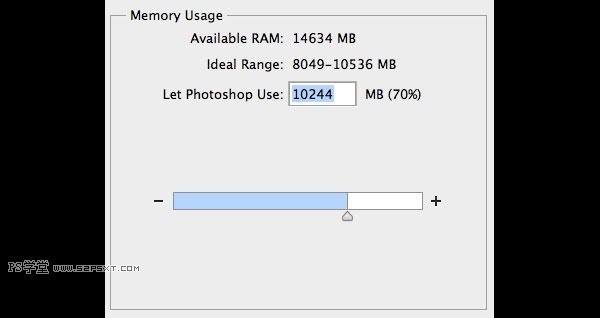
Photoshop's performance settings show how much memory you let Photoshop use.
2. Use a scratch disk When your memory is fully used, your computer's hard drive will carry the remaining workload. By default, your scratch disk is the system (boot) partition, which is usually already loaded with your installed applications and operating system. It is recommended that you add all free hard disks as scratch disks. Under the menu Edit>Preferences>Performance, you can open the scratch disk options window, and click the up and down arrows on the right to prioritize the hard disks according to their usage. You can also consider the following aspects: •Solid state drives (SSD) will be faster than traditional hard drives (HDD). •As a scratch disk, internal drives are faster than external drives. •When using an external driver, if you have the capability, make sure you are using USB3.0, Firewire or Thunderbolt
You can allocate and prioritize in Photoshop's Performance Settings window.
3. Efficiency indicator If you select Efficiency in the lower status bar of the document window, you can see the efficiency level of Photoshop. If it displays 100%, it means the highest efficiency. You can improve efficiency by reducing the number of layers and Smart Objects, but this may disrupt your workflow since editable source layers are not retained. 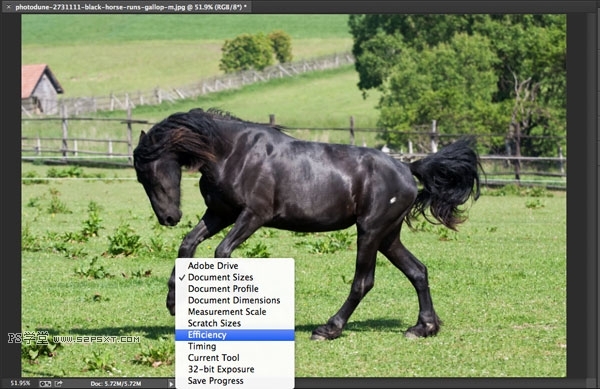
When you open a Photoshop document, the status bar will be displayed at the bottom of the document window.
4. Cache and History When you open images in Photoshop, the cache stores low-resolution versions of the images so you can quickly redraw them. There are 8 different levels of cache. The higher the cache level, the longer it will take Photoshop to open the file (use a cache level that is too high, it will cause the file to open very slowly). That is, the higher the cache level, the faster Photoshop will process the file once it is opened. You can find History & Cache under the menu Edit > Preferences > Performance. If your document image is small and has many layers (web design, UI design), you can use "Document Smaller". If your document image is large and has few layers (digital painting, image post-processing, etc.), you can select "Large document". Otherwise select "Default". A large number of history pages can reduce performance. Its variation range is 1-1000. If you are doing everything in non-destructive editing mode, this can be lowered to 5. If you are a digital artist and use the brush tool a lot, I recommend you choose 100. 
5. Reduce image resolution Before you work in Photoshop, it will be to your advantage if the purpose of your document is clear. Don't create a 2-megapixel image if you know it will only be used on pages that are 600px wide. Make sure you resize your image first before using filters, adjustments and effects. 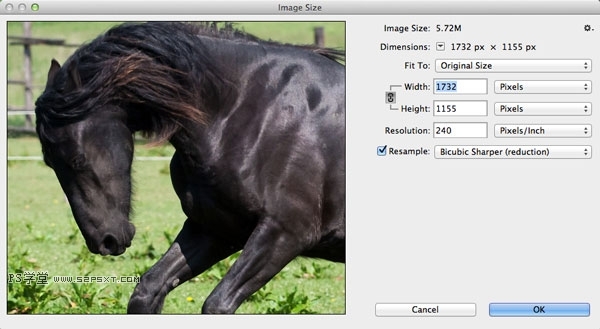
6. Close unnecessary documents This should go without saying. Opening several documents at the same time will not only be confusing, but also reduce the efficiency of Photoshop. Your goal should be 100% work efficiency (you can refer to the efficiency status bar introduced earlier). 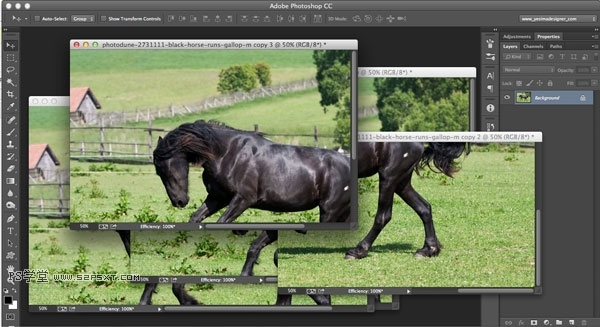
7. Store and auto-save in the background You can find this option in Edit>Preferences>File Handling. If you enable Background Storage, you can continue working in Photoshop while storing large files. You can see the storage progress in the status bar. If you turn it off, you won't be able to use automatic storage either. Autosave will save to a scratch disk, which may cause problems if your scratch disk has no free space. You can also set the auto-save interval from every 5 minutes to every hour. 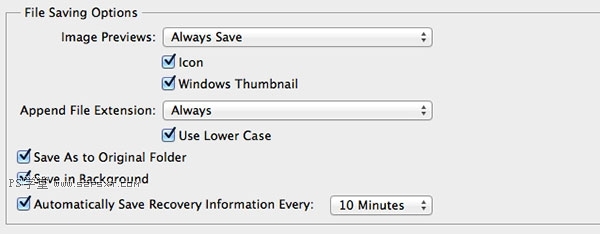
Photoshop’s file storage options
8. Clear history and clipboard You can quickly clear all history and clipboard through Edit>Clean>All any information. This is useful if you have a lot of history or have copied larger-sized images. Once a file is selected and copied, the file will be saved to the clipboard and take up valuable memory space. 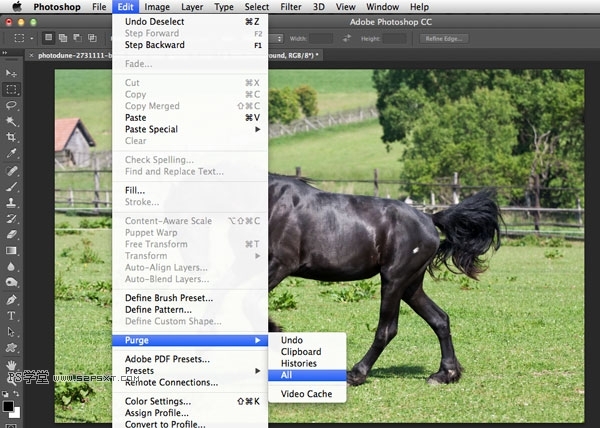
9. Turn off layer panel previews and thumbnails For layers, channels, and paths, you can turn off previews (Layer Panel Menu > Panel Options > None). Turning off layer preview thumbnails will speed up Photoshop, but may make it harder for you to find layers. If you're used to naming and grouping layers, you won't be able to find them even if you turn off thumbnails. 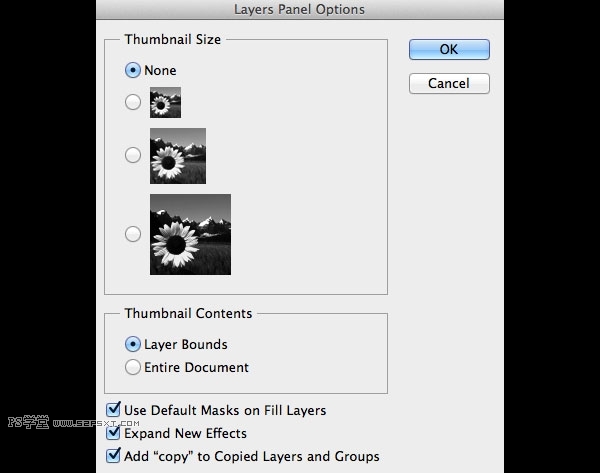
10. Use layers wisely First, it is recommended to set the status bar to display the document size. The first size is the minimum achievable combined file size of the document, and the other size after "/" is the current document size. If you have several layers, the current document size will definitely be larger than the minimum size. One of the most important things to remember is that adjustment layers are definitely better to use than copy layers because adjustment layers add little to the size of your document. Flattening the layers can reduce the file size to a minimum, but this is a very drastic change since you will lose all of your non-destructively edited layers. Under File > Scripts you will find the following items, which can also reduce the size of the document without flattening layers.
•Delete all empty layers
•Flat all layer effects
•Flat all masks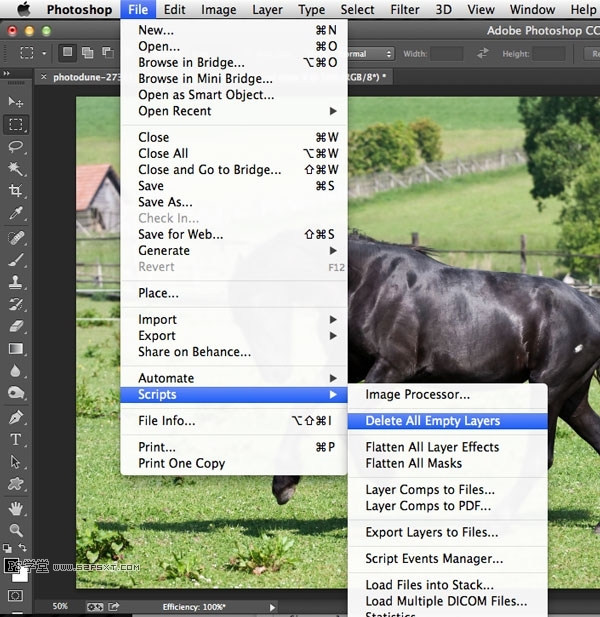
Summary
Please click on the 10 above After the performance is set up in the steps, the software operation will take a big step forward. Although the skill pictures shown above are in English, they can also be used in CS5 and above versions. Just compare and find them. I hope that through the above 10 steps, you can better optimize the performance of your Photoshop software.
For more PhotoShop performance optimization related articles, please pay attention to the PHP Chinese website!

